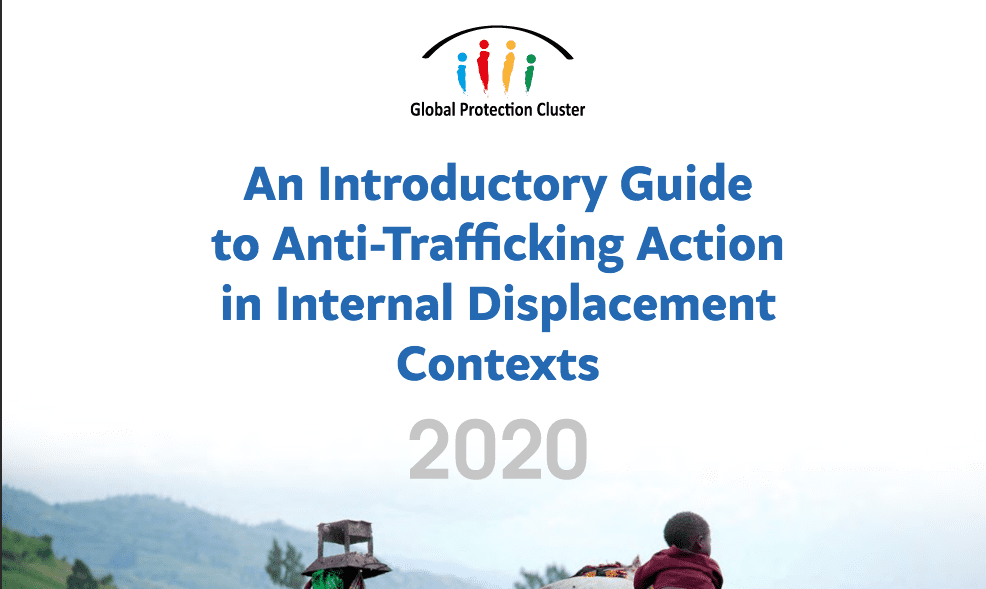
Introductory Guide: Anti-Trafficking Action in Internal Displacement
Trafficking in persons (TIP) is a crime and a grave human rights violation that takes place in every country of the world. It is perpetrated in times of peace and stability and is increasingly evident in times of crisis. In 2017–2018, the newly established Global Protection Cluster Task Team on Anti-Trafficking in Humanitarian Action (the Task Team) conducted a stocktaking exercise with 29 Protection Clusters to assess if and how trafficking in persons was addressed within the cluster.
Only five Protection Clusters reported having an anti-trafficking response, while half of the clusters reported “no response” due to an absence of data on trafficking. The Protection Cluster coordinators, along with the Child Protection (CP) and Gender-Based Violence (GBV) Areas of Responsibility (AoR) coordinators interviewed for the assessment consistently requested guidance on anti-trafficking in order to begin implementation of, or strengthen, anti-trafficking responses. This document is an initial answer to those requests.
About the guidance
Purpose
The objective of this document is to introduce humanitarian practitioners to the issue of trafficking in persons in internal displacement contexts. The information is intended to assist in the detection, identification, referral, protection and assistance of trafficked persons who may be internally displaced persons (IDPs), part of the crisis-affected population or the host community. It also provides guidance on preventing trafficking and the relevant partners to work with in anti-trafficking action.
Read more here.
